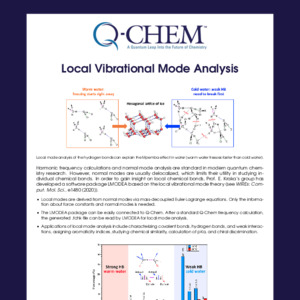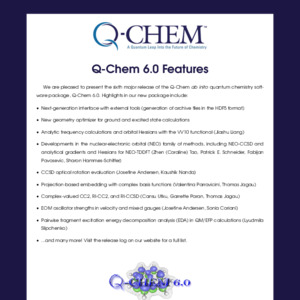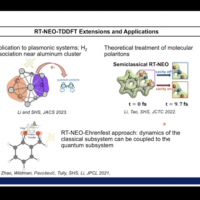Studying Quantum Effects of Nuclei with Nuclear-Electronic Orbital (NEO) Methods in Q-Chem

NEO methods enable description of nuclear quantum effects such as zero-point energy, proton delocalization, anharmonicity, and vibronic excitations. Q-Chem offers:
-
State-of-the-art parallel implementation to include nuclear quantum effects of specified hydrogen nuclei at low cost;
-
NEO methods for ground state properties:
-
NEO-HF and NEO-DFT with epc17-2 (LDA) and epc19 (GGA) electron-proton correlation functionals;
-
NEO-HF and NEO-DFT geometry optimizations and analytic Hessians;
-
NEO-CCSD.
-
-
NEO methods for electronic, vibrational, and vibronic excitation energies:
-
NEO-CIS and NEO-TDHF;
-
NEO-TDA and NEO-TDDFT.
-
-
Analytic gradients and Hessians for excited state geometry optimization and molecular dynamics simulations with NEO-CIS, NEO-TDHF, NEO-TDA, and NEO-TDDFT.
Want to try Q-Chem?






